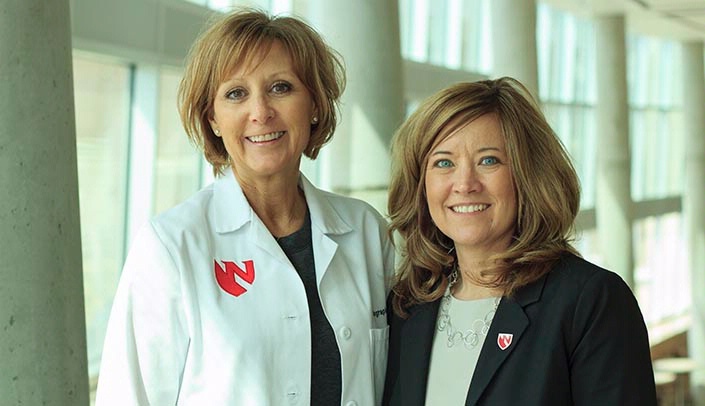In 2015, Tanya Custer and Kim Michael of the College of Allied Health Professions helped a sonography student develop an e-module as part of the first cohort of student e-learning projects through the Academic Affairs E-Learning Program.
They came away inspired.
Reaching out
Institutions currently using Michael and Custer’s e-modules include:
- Mayo Clinical School of Health Sciences
- Rush University College of Health Sciences
- Eastern Florida State College Imaging Sciences
- Augusta University Imaging Sciences
- College of Coastal Georgia Imaging Sciences
- Coastal Pines Technical College Imaging Sciences
- Cabarrus College of Health Sciences
- University of South Alabama Department of Radiologic Sciences
- Augusta University – College of Allied Health Sciences
- University of South Alabama Imaging Sciences
- Antelope Valley College Radiology
In addition, Mayo and Rush are partner institutions in a grant that Custer and Michael currently have under consideration with the American Society of Radiologic Technologists.
Nearly two years later, Michael, the program director of Diagnostic Medical Sonography Education and associate director of the Inteprofessional Academy of Educators, and Custer, assistant professor and distance education coordinator for the Department of Medical Imaging & Therapeutic Sciences, have completed 53 e-modules.
Not only are they beginning to use the modules in their classrooms, this semester all 53 are accessible on the UNMC E-Gallery, and the modules have been disseminated to 10 other institutions which also will make use of them in the coming school year.
“The modules are grouped by body system beginning with an anatomy module and then branching into 3-4 modules reviewing pathologies related to that specific body system,” Custer said.
Beginning with a $25,000 Curricular Redesign Grant through the UNMC E-Learning Program (which the college matched), the team has already received additional funding for their work from the Association of Educators in Radiologic Science and has another grant under review. With the modules complete, the focus going forward is to explore how the e-modules can be used and how effective they are, not only at UNMC but at the other participating institutions.
“Are they useful? Are they effective?” Custer asked. “Do students continue to like them? Do they continue to learn better from them? Is it a way we can help improve their critical thinking?”
Part of the question is how the modules will affect the course curriculum.
“We cannot keep our current curriculum and then continue to add more assignments for students to do,” Michael said. “We have to determine where we can pull out information — because we are using an e-module to teach it.
“If I have a specific pathology already created in an e-module, and students can watch that and get their patient’s symptoms and relate to a person we’re talking about, that’s going to stick in their minds better than me giving them a slide and saying, ‘Here’s the basics.’ We’re hoping it brings that patient and pathology to life — instead of just memorizing something, it’s becoming part of their thought process.”
“Our goal is to give them that foundational information outside the classroom, and then in the classroom, move them to higher-order thinking, the critical thinking,” Custer said.

Kim and Tanya, thanks for the hard work, advancing the knowledge about teaching anatomy with technology, and the dissemination of MITS/CAHP's work to the national audience. Karen
Kim and Tanya congratulations on successfully implementing two years of e-learning curricular development with your students at UNMC and beyond nationally. Peggy
Kim and Tanya, you guys rock! I am amazed at how you have done all of this in such a short time, while also taking care of your many other responsibilities. Great work!!
Greg